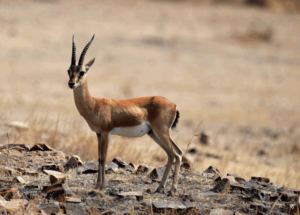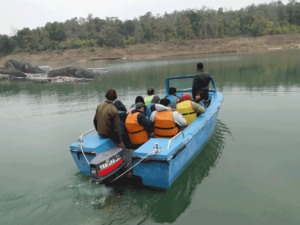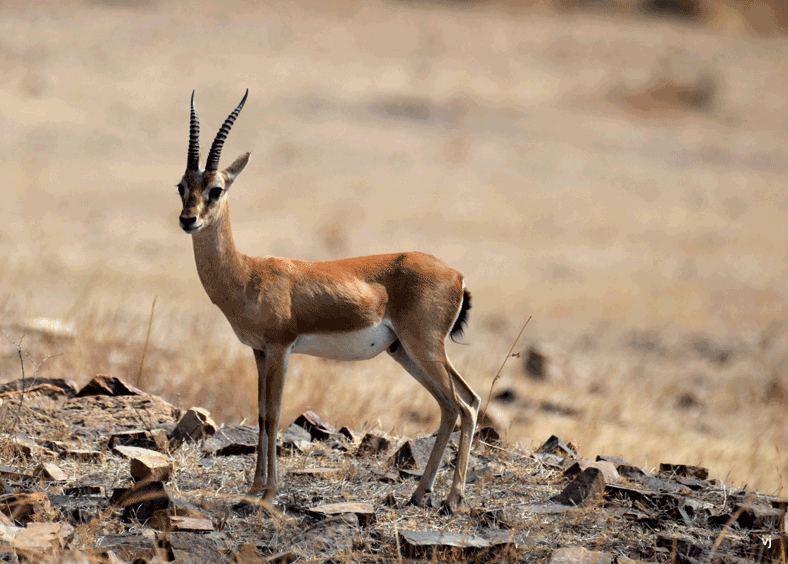Panna National Park Safari Booking
Jim Corbett National Park. Show on Map
Request Price
Overview
Panna National Park Safari Booking
Panna Tiger Reserve: Get ready to spot the majestic Bengal tiger in its natural habitat!
Panna National Park, located in Madhya Pradesh, India, is one of the country’s most renowned tiger reserves, with a high success rate of sightings
Nestled amidst the majestic Vindhya Hills of Madhya Pradesh lies the Panna Tiger Reserve, a haven for tiger enthusiasts. These magnificent creatures roam free within a dynamic, dry, deciduous forest.
The reserve boasts a diverse landscape featuring vast plateaus, dramatic gorges, and captivating waterfalls. Explore ancient archaeological sites and immerse yourself in the region’s rich cultural heritage. The Ken River snakes gracefully through the reserve, adding to its exceptional beauty.
Teak forests in the north and teak-Kardhai mixed forests in the east act as the reserve’s natural borders. The NE-SW Vindhya Hills serves as a vital corridor, connecting eastern and western populations of various wild animals.
Beyond the majestic tigers, Panna offers a vibrant wildlife display. Witness the grace of leopards, the wild spirit of dholes (wild dogs), and the cunning of wolves and hyenas. Smaller cats also prowl the undergrowth.
Seek out the mysterious sloth bear in its preferred habitat of limestone escarpments and secluded valleys. The dense woodlands provide sanctuary for herbivores like sambar (the largest Indian deer), the elegant chital, and the stately four-horned antelope (chowsingha). Keep your eyes peeled for the majestic blue bull and the graceful chinkara, especially in the open grasslands bordering the reserve.

Panna: Tiger Paradise & Birder’s Dream
Panna National Park is a haven for birdwatchers, boasting over 200 resident and migratory bird species. Witness the graceful white-necked stork, the honking Bar-headed goose soaring through the sky, and the agility of the Honey Buzzard in its hunt. Keep an eye out for the vibrant Blossom-Headed Parakeet, the stunning Paradise Flycatcher, and the unique Slaty-Headed Scimitar Babbler. Panna is also a crucial habitat for 5 vulture species, a vital part of the ecosystem.
Diverse Landscapes, Diverse Flora: The park’s unique ecosystem is shaped by a dry, hot climate and shallow Vindhyan soils, resulting in Dry Teak and Dry Mixed Forests. The dominant vegetation type is Miscellaneous Dry Deciduous Forest interspersed with Grassland Areas, offering a variety of habitats for birds.
Botanical Treasures: Explore the rich tapestry of plant life at Panna. Look out for distinctive tree species like Tectona grandis (teak), Diospyros melanoxylon (ebony), Madhuca indica (mahua), and Boswellia serrata (Salai). The understory boasts a variety of shrubs including Lantana camera and Ziziphus mauritiana (Indian jujube). Grasslands are carpeted with species like Apluda mutica and Themeda quadrivalvis, providing essential foraging grounds for herbivores
Panna National Park Safari Types
Open Jeep Safari
In all of the Panna Tiger Reserve’s zones, open Jeep safaris are easily accessible, however, you must schedule your safari in advance to ensure that the chosen gate will be open for greater big cat sightings.
Canter Safari
Canter Safari is well-known in the Madla zone. However, it is only advised that you go on a Canter Safari if you do not have a permit for the Open Jeep Safari.
Elephant Safari
Another tempting choice is the elephant safari. When you do your Panna National Park Safari Booking, make sure you do not miss out on this one. You can have an elephant ride and take a tour of the area to get up and personal with wild Panna family members, which is quite fascinating. Night Safari in the Ganga region is ready to challenge and excite you if you happen to be an extremely daring person.
Panna National Park Safari Booking Procedure
Arrange a free consultation with one of our specialists to learn about the ideal safari zone to book based on your area of interest. If you want to book an all-inclusive safari package that includes airport transportation, lodging, meals, and internal transfers, Banzaara Travels can help you with all of it.
To secure the finest zones for sightings, it is advisable to organize your trip far in advance. If you need any help booking your Panna Safari and are unsure which gates to choose, please mail us or get in touch with Banzaara Travels. Additionally, the websites for Mahaecotourism and MP Tourism offer online Panna Safari. These services, however, only allow you to reserve your safari permits—not the jeep, lodging, meals, or internal transportation to the reserve gates.
How to reach
The Madhya Pradesh districts of Panna and Chhatarpur are home to Panna National Park. The distances from Khajuraho, Satna, Jhansi, Jabalpur, and Bandhavgarh National Park to the main gate, known as Madla, are 25 kilometers (40 minutes), 90 kilometers (02 hours), 190 kilometers (03 hours), and 250 kilometers (04 hours), respectively.
Khajuraho Airport is the closest airport. Jabalpur’s airport ranks second in importance.
From the NH 44 route, The Panna National park is conveniently accessible.
Timings and Pricing
- Panna is open 365 days a year, from 1 October until 30 June. This park remains closed during the monsoon in the months of July, August, and September.
- Indians and non-Indians must pay different entrance fees in Panna. Throughout the entire season, the cost structure is constant. In Panna, cost increases occur on the weekends.
Safari zones
When you do your Panna National Park Safari Booking, make sure you have a look at the safari zones. The park consists of two core zones and one buffer zone. Hinouta and Madla are the core zones. Harsha is the bulwark. Additionally, there are two buffer gates: Khajurikudar and Akola.
Zone of Madla Core
The Madla zone is the Panna’s oldest core zone. Amazing fauna can be viewed there. Even better, you may take a boat safari on the Kin River.

Core Zone of Hinauta
Additionally, there are opportunities to see Bengal tigers in this area. Also, well-known in this area are sloth bears and Indian Leopards. Moreover, the waterfalls are the best thing in this place.
Buried Zone at Harsha Gate
It is a protected area known for its night safari. The park runs from 6.30 pm until 9.30 pm. The area filled with incredible nocturnal wildlife is accessible through the fence.
Must Carry Things
Things to bring with you on your Panna Tiger Safari:
- DSLR or camera to record those special safari moments.
- Binoculars are useful for viewing wildlife up close and safely.
- On a hot day, drink plenty of water to prevent dehydration.
- To avoid the harsh sunlight, wear a hat and sunglasses.
- To protect your face from dust, cover it with a bandanna or cotton scarf.
- If you’re going on a safari in the winter, bring warm clothing or a jacket. After nightfall, it becomes really cold in the jungle.
- To protect you and your equipment from water during rain, use a rain cover.
- If you’re planning an afternoon safari in Panna during the winter, consider bringing warm clothing because it may become extremely chilly there very quickly.
Booking Your Panna Safari Tickets With Banzaara Travels
Booking your Panna National Park safari is simple with Banzaara Travels. We offer both online and offline ticket booking options. Our team will guide you through the process for online bookings to ensure a hassle-free experience. Tickets can also be purchased at the park entrance, subject to availability. Remember, a separate ticket is required for the jeep safari.


